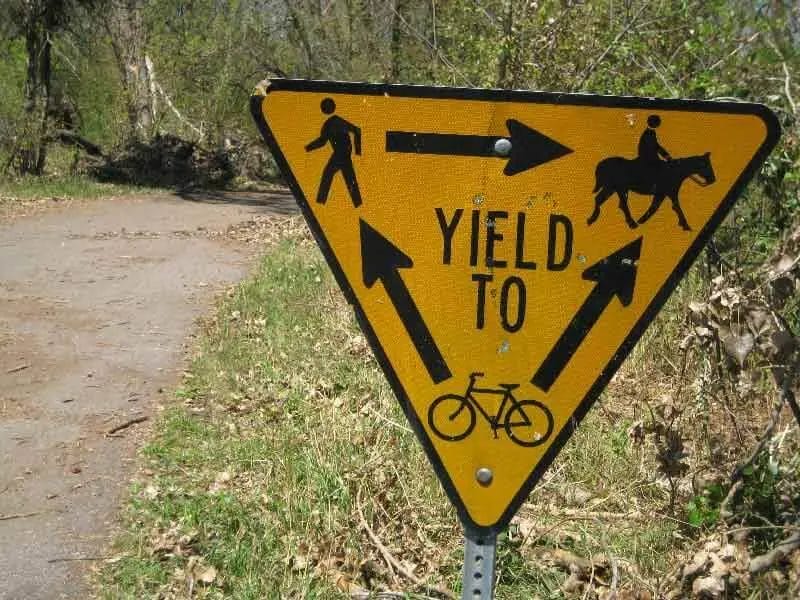If you’re wondering whether horses are allowed on the road, the answer may vary depending on the jurisdiction you’re in. In many areas, horses are considered vehicles and are therefore permitted to travel on the roadways. However, there are certain rules and regulations that horse riders must follow to ensure their safety and the safety of others. It’s important to familiarize yourself with local laws and guidelines before riding a horse on the road.

Safety Precautions for Riding Horses on Roads
Riding horses on roads can be an exhilarating experience, allowing riders to explore new trails and enjoy the beauty of nature. However, it is essential to prioritize safety when riding horses on roads to prevent accidents and ensure the well-being of both riders and horses. Whether you are an experienced equestrian or a beginner, following these safety precautions is crucial:1. Wear Safety Gear
One of the most important safety precautions when riding horses on roads is wearing appropriate safety gear. This includes a well-fitted helmet, riding boots or shoes with a sturdy heel, and reflective clothing or accessories. Wearing a helmet can protect your head in case of a fall or collision, while reflective clothing will make you more visible to motorists.2. Use Reflective Equipment
Visibility is key when riding on roads, especially during low-light conditions or at night. Make sure to attach reflective equipment, such as reflective bands or lights, to your horse’s bridle, saddle, and tail. This will increase your visibility and reduce the risk of accidents with motorists who might not be able to see you clearly.3. Follow Traffic Rules
When riding on roads, it is vital to follow the same traffic rules as other vehicles. This means obeying traffic signals, stopping at stop signs, and using hand signals to indicate your intentions. Always ride on the right side of the road, facing traffic, and maintain a safe distance from vehicles. Remember to yield to pedestrians and be cautious when crossing intersections.4. Be Predictable
To ensure your safety and the safety of others, it is essential to be predictable while riding on roads. Maintain a steady pace and avoid sudden changes in direction or speed. Signal your turns using hand signals, and communicate with motorists by making eye contact whenever possible. This will help drivers anticipate your movements and avoid any potential accidents.5. Stay Alert
Stay alert and vigilant at all times when riding on roads. Keep an eye on your surroundings, including other vehicles, pedestrians, and potential hazards on the road. Be mindful of your horse’s behavior and body language, as it can indicate any discomfort or unease. By staying alert, you can react quickly to any unexpected situations and prevent accidents.6. Avoid Distractions
Distracted riding can be just as dangerous as distracted driving. Avoid using your phone or any other electronic devices while riding on roads. Keep your attention focused on the road and your surroundings, ensuring that you are aware of any potential hazards or approaching vehicles.7. Practice Proper Trail Etiquette
When riding on roads that are also shared with pedestrians and cyclists, it is important to practice proper trail etiquette. Yield to pedestrians and cyclists, and give them ample space when passing. Slow down and maintain a calm and controlled demeanor, as sudden movements or loud noises may startle other road users.8. Train and Socialize Your Horse
Before riding your horse on roads, ensure that it is adequately trained and accustomed to the sights and sounds of traffic. Gradually expose your horse to road environments, starting with quiet roads and gradually progressing to busier ones. By socializing your horse and building its confidence, you can minimize the risk of spooking or unruly behavior on the road.9. Plan Your Route
Before heading out on a road ride, plan your route carefully. Choose roads with wide shoulders or designated equestrian lanes whenever possible. Avoid heavily congested areas or high-speed roads, as they pose a greater risk to both riders and horses. Familiarize yourself with the route to be aware of any potential hazards or challenging terrain. In summary, riding horses on roads can be a rewarding experience, but safety should always be the top priority. By wearing appropriate safety gear, using reflective equipment, following traffic rules, being predictable, staying alert, avoiding distractions, practicing proper trail etiquette, training your horse, and planning your route, you can minimize the risks and enjoy a safe and enjoyable ride on the roads. Remember, responsible riding not only protects you and your horse but also fosters a positive relationship between equestrians and other road users.
Importance of Proper Equipment and Gear for Horses on the Road
When it comes to traveling with horses, proper equipment and gear are of utmost importance. Not only does it ensure the safety and well-being of the horses, but it also plays a crucial role in the overall success and efficiency of the journey. In this section, we will discuss why it is essential to have the right equipment and gear for horses on the road.
1. Safety
The foremost reason for using proper equipment and gear is to ensure the safety of both the horse and the rider. Horses can be unpredictable creatures, especially in unfamiliar environments or stressful situations. Therefore, it is vital to have reliable and well-fitted gear to prevent accidents and injuries.
One of the key safety equipment for horses on the road is a well-fitting halter and lead rope. This allows the handler to have control over the horse during loading, unloading, and while on the road. Additionally, a properly fitted bridle and bit combination ensures effective communication between the rider and the horse, promoting safe and controlled movements.
Another essential safety gear is protective leg wear, such as boots or wraps. These help to prevent injuries and provide support to the horse’s legs, reducing the risk of strain or knocks during transportation.
2. Comfort
Traveling can be stressful for horses, especially during long journeys. Proper equipment and gear play a significant role in ensuring the comfort of the horse and minimizing their stress levels.
A well-fitted and comfortable saddle is crucial for the horse’s well-being on the road. A poorly fitting saddle can lead to discomfort, pain, and even long-term physical issues. It is essential to choose a saddle that properly fits the horse’s back and distributes the rider’s weight evenly.
Proper padding and cushioning in the saddle pad also contribute to the horse’s comfort, preventing saddle sores and pressure points. Additionally, using blankets and sheets appropriate for the weather conditions keeps the horse warm or cool, depending on the climate.
3. Performance and Efficiency
The right equipment and gear can significantly impact the horse’s performance and overall efficiency during travel. By using appropriate gear, riders can optimize the horse’s abilities and ensure a smooth and successful journey.
For example, using the correct type of bit and bridle combination can enhance communication and responsiveness, improving the horse’s performance. Similarly, using lightweight and aerodynamic horse trailers can reduce drag and improve fuel efficiency during transportation.
4. Compliance with Regulations
When traveling with horses, it is important to comply with local, state, and federal regulations related to transportation equipment and gear. Failure to meet these requirements can result in penalties and legal issues.
Ensure that your horse trailer meets all safety standards and regulations, such as proper ventilation, adequate lighting, and secure partitions. It is also important to have reflective gear and warning signs to enhance visibility on the road, especially during nighttime travel.
5. Longevity and Durability
Investing in high-quality equipment and gear ensures longevity and durability. By choosing well-constructed and durable gear, you can save money in the long run by avoiding frequent replacements.
Regular maintenance and proper care of equipment, such as cleaning and lubricating saddle parts, can prolong their lifespan and functionality. This not only benefits the horse’s safety and comfort but also contributes to cost-effectiveness in the long term.
In summary, proper equipment and gear are crucial for horses on the road to ensure safety, comfort, performance, compliance with regulations, and longevity. By investing in the right gear and maintaining it properly, you can provide your horse with a safe and comfortable travel experience while optimizing their performance and efficiency.

Tips for Drivers When Encountering Horses on the Road
Driving on the road can sometimes involve encountering horses, particularly in rural areas or near equestrian facilities. It’s important for drivers to be aware of how to safely interact with horses on the road to ensure the safety of both the drivers and the riders. Here are some useful tips to keep in mind: 1. Slow down and be cautious: When you see horses on or near the road, reduce your speed and approach them cautiously. Sudden loud noises or fast movements can startle horses and cause them to react unpredictably. Always maintain a safe distance and be prepared to stop if necessary. 2. Give them space: Horses are large animals and can be easily spooked. It’s crucial to give them plenty of space to feel comfortable. Avoid honking your horn or revving your engine, as this can startle the horses and potentially lead to accidents. Maintain a reasonable distance and be patient. 3. Pass slowly and wide: If you need to pass a horse and rider on the road, do so slowly and with ample space. It’s best to give them at least a car’s width of space to ensure their safety. Pass at a slow, steady speed and avoid any sudden movements that could startle the horse. 4. Be mindful of hand signals: Some riders may use hand signals to communicate with drivers. If you see a hand raised, it likely means that the rider wants you to slow down or stop. Pay attention to these signals and respond accordingly to ensure the safety of everyone involved. 5. Avoid sudden noises or bright lights: Horses have sensitive hearing and can be easily startled by sudden loud noises or bright lights. If you’re driving at night, dim your headlights when approaching horses to avoid blinding them. Similarly, avoid honking your horn unless it’s absolutely necessary. 6. Stay alert: Keep an eye out for any signs or warnings indicating the presence of horses on the road. Be particularly cautious in areas where horses are commonly seen, such as near riding trails, equestrian centers, or open fields. Stay alert and be prepared to adjust your driving accordingly. 7. Do not attempt to overtake a group of horses: If you encounter a group of riders or horses traveling in a line, it’s best to patiently follow behind them until you can safely pass. Attempting to overtake the group can startle the horses and create a dangerous situation for everyone involved. In summary, when encountering horses on the road, it’s vital for drivers to exercise caution, be patient, and give them plenty of space. By following these tips, drivers can help prevent accidents and ensure the safety of both themselves and the riders. Remember, when sharing the road with horses, it’s important to respect their size, sensitivity, and potential reactions.Legal Rights and Responsibilities of Horse Riders on the Road
As a horse rider, it is important to be aware of your legal rights and responsibilities when riding on the road. Understanding these rights and responsibilities not only ensures your safety, but also helps to maintain harmony between horse riders and other road users. In this section, we will explore the key legal aspects that every horse rider should be familiar with.
Road Safety Legislation
When riding a horse on the road, you are considered a vulnerable road user and are subject to the same road safety legislation as cyclists and pedestrians. This means that you must adhere to the same rules and regulations to ensure your safety and the safety of others.
Some of the key road safety rules that horse riders should follow include:
- Riding on the left-hand side of the road, facing oncoming traffic
- Using appropriate hand signals to indicate your intentions
- Obeying traffic signals and signs
- Maintaining control of your horse at all times
- Using reflective clothing and equipment to improve visibility
- Being considerate to other road users and giving way when necessary
Rights to Use the Road
In many countries, horse riders have the legal right to use public roads for riding. However, it is important to note that this right is not absolute and can be subject to certain restrictions and local bylaws. It is advisable to check with your local authorities to ensure you are aware of any specific regulations that may apply in your area.
Furthermore, horse riders should be aware that some roads may have restrictions or prohibitions on horse riding due to safety concerns. These restrictions are typically put in place to protect both horse riders and other road users, and it is important to respect them.
Responsibilities towards Other Road Users
As a horse rider, you have a responsibility to ensure the safety of other road users. This includes being considerate, patient, and alert at all times. Some key responsibilities include:
- Keeping your horse under control and preventing any aggressive or unpredictable behavior
- Avoiding sudden movements or actions that may startle other road users
- Being mindful of the size and potential obstacles your horse may create on the road
- Remaining calm and courteous when interacting with other road users
Insurance and Liability
It is highly recommended for horse riders to have appropriate insurance coverage in place to protect themselves and others in the event of an accident or injury. This insurance should cover public liability and, if applicable, personal accident benefits.
Furthermore, it is important to understand that horse riders can be held liable for any damage or injury caused by their horses while on the road. Therefore, it is crucial to take all necessary precautions to prevent accidents and always ride responsibly.
In summary, as a horse rider, it is essential to be familiar with your legal rights and responsibilities when riding on the road. By following road safety legislation, respecting local regulations, and being considerate towards other road users, you can ensure a safe and enjoyable riding experience for yourself and those around you. Remember to obtain appropriate insurance coverage and always ride responsibly to minimize the risk of accidents and injuries.
FAQs
Are horses allowed on the road?
Yes, horses are generally allowed on the road, but specific regulations may vary depending on the country, state, or local jurisdiction. It is important for horse riders to follow traffic rules, use designated paths or lanes where available, and take necessary safety precautions to ensure the well-being of both the horse and other road users.
Conclusion:
In conclusion, the presence of horses on roads can vary depending on the local regulations and circumstances. While in some areas, horses may be permitted to share the road with motorized vehicles, it is crucial to prioritize safety for all road users. Responsible horse ownership entails proper training, awareness of traffic laws, and consideration for drivers. Additionally, collaboration between equestrians, drivers, and local authorities can result in the implementation of measures to ensure the safe coexistence of horses and vehicles on the road. By fostering understanding and adhering to applicable regulations, we can strive for harmony between horses and road users.
